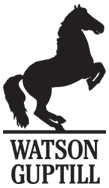These days, each person has a signature. We are made unique by our last names and the way in which we sign our names. There is never two who are exactly alike. Personally, I find this a very efficient use of the alphabet that we have worked so long to develop.
In the origins of writing, however, there was often no such thing as a way to write ones name, especially as many people were illiterate. As such, the early peoples of Mesopotamia developed what was called "personal seals."
With the rising of more modern Europe, came the new, and much simpler alphabet. Which made it easier for many people to read, and as such, made more people want books. As the demand grew, printing presses developed.
As the printing press developed, people again sought ways to claim their work. This developed publishing marks.
Originally these marks were very simple, very personal marks. Many often had religious, or local connotation.
These days, publishing logos are from big companies, their original creations mired in years and stories. We now recognize companies, rather than an individual when we see their logos.
 |
| http://www.theguardian.com/books/2011/nov/16/penguin-self-publishing |
 |
| Watson_Guptill_logo.png |

No comments:
Post a Comment